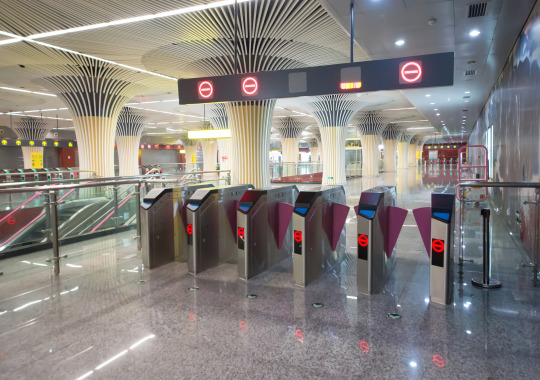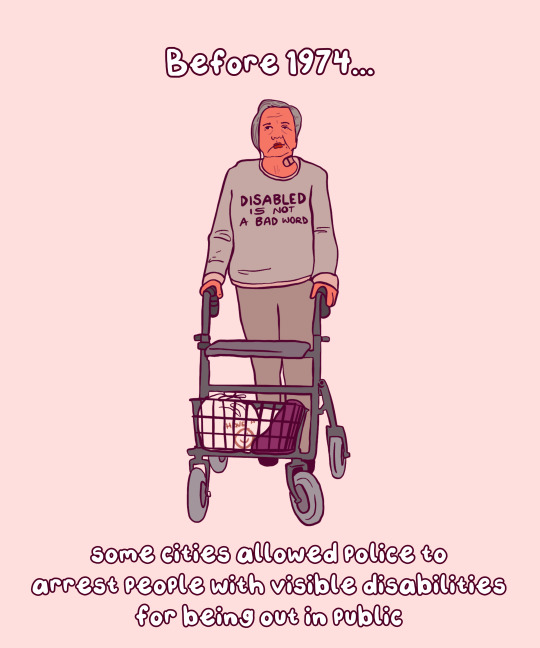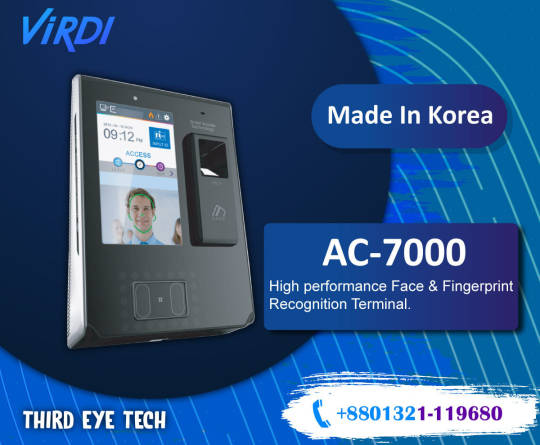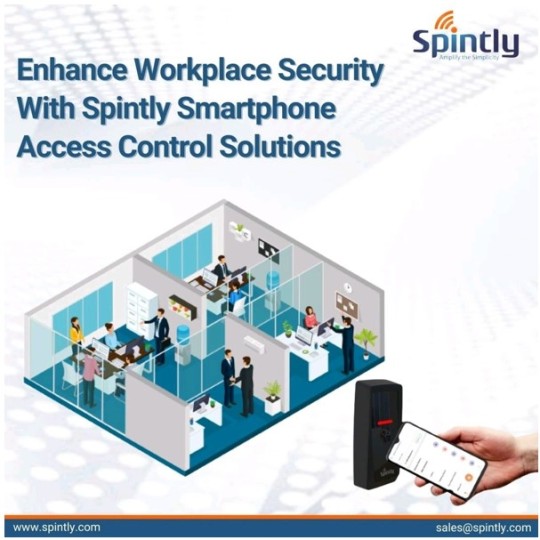#Access control cards
Text
Creating Custom ID Cards and Employee ID Badges
Businesses and organizations rely on ID cards and employee badges for identification, access control, and branding. Advances in ID card printing technology allow creating customized cards in-house. This guide covers tips for designing and printing great custom employee IDs.
Why Issue Custom Employee ID Badges?
Here are some key reasons organizations should invest in customized ID badges for staff:
Security – ID badges enhance security by clearly identifying authorized personnel. They can limit building and system access.
Identification – Custom cards can be designed with employee photos, names, titles, departments, and other details for easy visual ID.
Access Control – Integrated technologies like smart chips, magstripes, and barcodes help control access to facilities and systems.
Branding – Consistent branding reinforces corporate image. Custom IDs represent an organization more professionally than generic cards.
Membership – Badges make employees feel part of the organization. They demonstrate membership status and privileges.
Professionalism – IDs must be worn by customer-facing staff. They project professionalism and allow for better customer interactions.
Metrics – Usage tracking provides data on employee activity levels, presence, etc. This supports human resources and operations.
Key Elements of Employee ID Badges
Well-designed staff ID badges should include:
Photograph – The employee’s photo enables facial recognition and personalization.
Name – Legibly printed first and last names. Nicknames or informal names are generally unsuitable.
Title – Including job titles provides context.
Department – Listing the employee’s department conveys organizational structure.
Employee ID number – Unique staff numbers enable database tracking.
Company logo – Adds branding and reinforces corporate identity.
Card background – Visual elements like brand colors make cards more attractive and professional.
Expiry date – Prevent expired cards from granting access.
Contactless/barcode – Support building access, system login, tracking, etc.
Security elements – Visual security features like holograms help prevent counterfeiting.
How to Design Great Custom Employee ID Badges
Follow these tips for ID badge designs that impress:
Use company branding – Include logos, colors, and fonts aligned with brand guidelines for consistency.
Focus on essentials – Only highlight absolutely necessary info like photo, name, department, expiry, etc. Avoid clutter.
Use large text – Text should be prominent and legible from a distance. Sans-serif fonts work best.
Add visual interest – Make use of color, graphics, icons and other elements for visual pop.
Include security features – Holograms, specialty inks, microtext, guilloche patterns all help thwart counterfeiting.
Leave white space – Don’t overcrowd designs. Borders and spacing improve aesthetics and readability.
Get employee input – Consider allowing staff to provide their preferred name or photo. This boosts satisfaction.
Proof carefully – Double check names, titles, ID numbers, expiry dates, and other info for errors before printing.
Test card designs – Verify designs render properly through test prints before full production.
Great card design software simplifies creating stunning customized ID badge designs even without graphic design expertise.
Options for Printing Custom Employee ID Badges
There are several options for producing ID cards and staff badges:
Outsource production – Card printers and badge manufacturers can produce high volumes. This avoids equipment costs.
Purchase ID card printer – Mid-volume needs can justify investing in an in-house badge printing system for convenience and security.
Use PVC card stock – Standard blank white PVC cards work for basic IDs. They offer reduced cost.
Upgrade card material – More durable composites or polyethylene cards better withstand wear.
Add holographic laminates – Applying holographic overlays enhances security and attractiveness.
Print single-sided – Most IDs only require printing on the front. This saves supply costs.
Print dual-sided – Additional info and security elements can be added to the backside.
Encoding – Smart chip or magstripe encoding provides advanced functionality.
Evaluate business needs and ID card volumes to determine the most suitable production methods.
Equipping Your In-House ID Badge Printing Station
To set up ID card printing in-house:
Get a reliable badge printer – Leading vendors include Zebra, Fargo, Evolis, Magicard, IDP, and others. Consider print speeds, features, and volumes.
Use high-quality supplies – Use only approved cards, ribbons, laminates to prevent printer issues and poor print quality.
Install badge design software – User-friendly software simplifies creating and printing badge designs. May come bundled with printer.
Train staff on software – Ensure employees tasked with card design know how to operate the software effectively.
Implement security procedures – Blank cards and supplies should be securely stored with limited access to prevent unauthorized use.
Plan card distribution – New employee badges will need to be efficiently delivered to HR or managers for issuance.
Budget for supplies – Factor in ongoing supply costs for cards, ribbons, laminates, cleaning kits, etc.
A proper ID card printing setup makes producing employee ID badges fast, convenient, and secure.
Issuing New Employee ID Badges
Here are some best practices for providing new staff members with ID badges:
Capture employee photos – Have new hires get professionally photographed or submit an approved headshot for the badge.
Gather personal details – Obtain legal names, titles, departments and any other info required for badge creation.
Create badge proofs – Mock up final badge proofs for employee approval before printing the actual card.
Confirm details are accurate – Employees should verify all printed badge details are exactly right before issuance.
Print and finish cards – Produce the cards according to the established design guidelines and policies. Apply any overlaminates or encoding.
Organize formal issuance – HR, managers, or security teams should handle badge issuance during onboarding. Review policies.
Destroy expired cards – Any old IDs turned in should be shredded or otherwise destroyed to prevent misuse.
Replace lost cards – Staff should immediately report lost badges so replacement cards can be issued. This maintains security.
Following a structured system for new and replacement ID issuance is key for maintaining an effective company credentialing program.
Why Properly Maintain ID Card Printers
To keep employee ID badge printers functioning optimally:
Perform cleaning – Regular cleaning maintains print quality and prevents debris buildup. Use cleaning kits.
Replace used supplies – Promptly install new ribbons, laminates, etc. when existing ones are depleted. Generic supplies cause issues.
Calibrate periodically – Recalibrate the printer every few months or if cards are misaligned or damaged.
Update firmware – Install updated printer firmware when available to fix bugs and improve performance.
Protect from dirt/liquids – Don’t set up printers in dusty or spill-prone areas. Keep covered.
Follow maintenance schedule – Stick to manufacturer guidelines for cleaning printheads, sensors, rollers, etc.
Inspect finished cards – Check completed cards in output hoppers so any potential issues are caught early.
Contact technical support – If print quality declines or other problems arise, contact the vendor for troubleshooting help.
Proper printer care and maintenance helps avoid downtime and quality problems that impair production of employee ID badges.
Key Takeaways for Custom Employee ID Cards
Well-designed custom IDs represent organizations more professionally.
Essential elements include photos, names, titles, logos, and security features.
ID printers allow convenient in-house production and customization.
Proper badge design software, supplies, and training help set up ID card printing.
Following structured new badge issuance and replacement procedures bolsters security.
Printers must be cleaned and maintained to avoid print quality or card feeding issues.
With professional custom-designed ID cards for employees, organizations can build branding, improve security, and elevate professionalism across the board.
#Custom ID cards#Employee ID badges#Identification cards#Plastic ID cards#Photo ID cards#ID card design#Access control cards#ID card solutions#ID card services
0 notes
Text


october is coming. which means, of course, that it is time for the horrors. tfw the dream self must confront the Nightmare Self
#body horror //#homestuck#YES i am invoking tarot symbolism and YES i have reasons for choosing the cards i did and YES i AM just making things up as i go. im normal#symbolism runthrough real quick. consider this an Artist's Statement of sorts.#The Tower: ambition built on a flawed premise. guy who always thinks he knows better than you in dire need of a wakeup call#strength: the journey of the self vis a vis finding the courage to act & tapping into latent potential that always existed#& simply needed to be accessed. note: dirk in this card is brain ghost dirk specifically.#(an illusion constructed by jake because he didn't believe in his own repressed abilities - drawn here as The Horrors.)#the devil: you are maybe not the CAUSE of all of your problems but DAMN you are making them worse for yourself.#this card is SO heavy on unhealthy coping mechanisms. symbolism here - very literally holding self down#sure it feels comforting in the moment but eventually you are going to drown.#the chariot: this one's not super clear visually but i do have a method to my madness#the chariot is the card of willpower; control; forward motion; resolution.#by the same token i think it is also a card about being really really stubborn - blinded by a goal.#holding onto the reins and refusing to let go even when holding them hurts you & others around you.#honestly i think some of the minor arcana fit better for a few of these cards but i wanted to stick w majors#for the sake of Icon Recognition i guess.#anyway [putting the alpha gang in the Narrative Wiggler to work through their problems]#they are going to the Dream Realm to meet their weirdest selves (and friends) in combat. unless...?#(it was never about fighting it was about healing. SYMBOLISM)
13 notes
·
View notes
Text
I love you ps2 that doesn't require spending two days to download a game. I love you plug-and-play ps2. I miss the days where everything was on ps2.
#chit chat#i still play ps2 cuz i love my games#it's getting so much harder to find controllers and memory cards tho#maybe if xbox wasn't so obsessed with internet access i would like it more
5 notes
·
View notes
Text
ok
#opened a bank account and got a debit card#and my dads like wow aren’t you excited 😆😆#why would i care about a debit card that’s entirely visible and i think even accessible to my dad#i’m never gonna feel. independent. and in control#not until i’m like fucking 35 and my parents are like fine you could leave our house i guess 😆#cant go out at night/alone. suspicious of all my friends that aren’t arab. cant even go to concerts#my dad actually got *angry* at my 21 year old brother saying he wants to get a fucking job with his own paychecks to save up money.#what the fuck is this horseshit#when will my life stop feeling sterilized and neutered#i just. want a bit of control. and distance from my parents. that’s literally. it#💭.txt#can’t dress how i want. i’ve never done a fucking thing#my life is just. so so fucking tiny and monitored
4 notes
·
View notes
Text
virdi ubio x pro 2 price bd

Virdi UBio-X Pro 2 High-End Face& Fingerprint Recognition terminal.VIRDI UBio-X Pro 2 Contactless Face Recognition System.The Latest Face Authentication Algorithm with walk-through Method:VIRDI UBio-X Pro is our new face access control and time & attendance terminal. Recognizes faces at a distance up to 3 meters, authenticates when user walk-through the gates. Integration with thermal camera: VIRDI UBio-X Pro 2 integrated with a thermal camera and measures user’s body temperature.in case of fever, the user will be denied for accessing and the log data recorded on the server. Easy user registration with mobile number: if you are not a registered user, simply enter your cell phone number on the first visit and you will be authorized to enter.The First Phone number you entered will be used as your ID when you visit later.Fake Face Detection technology with its liveness detection and anti-spoofing function: VIRDI UBio-X Pro 2 prevents unauthorized users from trying to authenticate with a 3D Mask,photo, or cut out photo. Easy Face-Pre Enrollment, using mobile phone or uploading an existing photo: it’s easy enrollment method will allow you to enroll user by simply taking a photo with your mobile phone, and uploading it to the server or if you already have photos of your employees you can enroll their faces by transferring the photos to your server.it overwrites the previously registered image with the new image on your server when you authenticate from the first time to enhance authentication accuracy.High performance: High Performance algorithm provides the fastest matching speed 20,000 face templates with 1 Sec.High definition camera provides fast accurate face authentication function under the brightest light up to 25,000 Lux. Various Application: VIRDI UBio-X Pro 2 is perfect face recognition terminal for visitor management, and access control with the multi modal authentication function, supports and fingerprints and cards.it can be widely used in ID Verification for a range of applications. Including of airports, office, construction sites, even home security and more. #virdi ubio-x pro 2 #virdi ubio-x pro 2 price in bd #virdi ubio-x pro 2 price in bangladesh #face punch access control price in bd #face punch time attendance price in bd #finger punch access control price in bd #finger punch time attendance price in bd #virdi bangladesh #virdi dealer in bangladesh #virdi distributor in bangladesh
#virdi ubio x pro 2#virdi ubio x pro 2 price bd#virdi ubio x pro 2 price in bd#virdi ubio x pro 2 price in bangladesh#virdi ubio x pro 2 price bangladesh#face punch access control price in bd#face punch time attendance price in bd#card punch access cozntrol price in bd#card punch time attendance price in bd#fingerprint access control price in bd#fingerprint time attendance price in bd#virdi bangladesh#virdi dealer in bangladesh#virdi distributor in bangladesh
1 note
·
View note
Text
zkteco f19 price bd

F19 is an intensive biometric print reader for access control applications, offering an unparalleled performance by using an advanced algorithm for reliability. precision and excellent matching speed. The F19 features the fastest commercial-based fingerprint matching algorithm and ZK high-performance, a high-image-quality infrared detection fingerprint sensor. The device offers flexibility to be installed standalone or with any third party access control panels that support standard Wiegand signal. All the operation can be done the TFTLCD color screen. The fingerprint image will be displayed on it. That will guide the user to put finger on proper position and increase the recognition rate. TCP/IP and RS485 are available that the device can be used in a different network.#zkteco f19 #zkteco f19 price bd #zkteco f19 price in bd #zkteco f19 price in bangladesh #zkteco f19 price bangladesh #fingerprint access control price in bd #fingerprint time attendance price in bd #card punch access control price in bd #card punch time attendance price in bd #zkteco bangladesh #zkteco dealer in bangladesh #zkteco distributor in bangladesh
#zkteco f19#zkteco f19 price bd#zkteco f19 price in bd#zkteco f19 price in bangladesh#zkteco f19 price bangladesh#fingerprint access control price in bd#fingerprint time attendance price in bd#card punch access control price in bd#card punch time attendance price in bd#zkteco bangladesh#zkteco dealer in bangladesh#zkteco distributor in bangladesh
0 notes
Text
Cheap and Sabse Sasta PVC ID Cards Quality at an Affordable Price
Cheap and Sabse Sasta PVC ID Cards: Quality at an Affordable Price
In today’s fast-paced world, identification is crucial for security, access, and management purposes. PVC ID cards have become the standard for organizations across various sectors due to their durability, flexibility, and professional appearance. If you’re looking for cheap and sabse sasta PVC ID cards without compromising on…
#Affordable PVC ID cards#Best PVC ID cards#Cheap PVC ID cards#Custom PVC ID cards#Durable PVC ID cards#High-quality PVC ID cards#Personalized PVC ID cards#Professional PVC ID cards#PVC access control cards#PVC employee ID cards#PVC ID card supplier#PVC ID Cards#PVC ID cards bulk order#PVC ID cards design#PVC ID cards for businesses#PVC ID cards for schools#PVC ID cards manufacturer#PVC ID cards online#PVC ID cards printing#PVC membership cards#PVC student ID cards
0 notes
Text

ZKTeco K40 is a 2.8-inch TFT screen Time Attendance & Simple Access Control Terminal. It has interfaces for third party electric lock and exit button. TCP/IP and USB Host make data management extremely easy. Most importantly,the built-in backup battery can eliminate the trouble of power-failure. With elegant appearance and reliable quality, you can get the best from it.#zkteco k40 #zkteco k40 price bd #zkteco k40 price in bd #zkteco k40 price in bangladesh #zkteco k40 price bangladesh #fingerprint access control price bd #fingerprint time attendance bd #card punch access control price bd #card punch time attendance price bd #zkteco bangladesh #zkteco dealer in bangladesh #zkteco distributor in bangladesh
#zkteco k40#zkteco k40 price bd#zkteco k40 price in bd#zkteco k40 price in bangladesh#zkteco k40 price bangladesh#fingerprint access control price bd#fingerprint time attendance bd#card punch access control price bd#card punch time attendance price bd#zkteco bangladesh#zkteco dealer in bangladesh#zkteco distributor in bangladesh
0 notes
Text
Enhancing Security with Flap Barriers in Automated Entrances

Flap barriers are transforming the way we approach security and entrance automation. These modern access control solutions are designed to effectively manage and secure entry points, offering high security and convenience. Today, we'll discuss the benefits of incorporating flap barriers for automated entrances and how they regulate crowd flow.
What are Flap Barriers?
Flap barriers are sophisticated access control devices featuring retractable flaps that open and close to permit or deny entry. Constructed from durable materials such as stainless steel and reinforced glass, these barriers are built to withstand heavy use while maintaining a sleek, contemporary appearance. They are commonly used in various high-traffic settings, including office buildings, transportation hubs, and public venues.
Enhancing Security with Flap Barriers
Controlled Access
Flap barriers provide precise control over who can enter secured areas. By integrating with card readers, biometric scanners, or QR code readers, they ensure that only authorized personnel gain access. This feature is crucial for maintaining security in sensitive or restricted areas.
Real-Time Monitoring
Equipped with advanced sensors and software, modern flap barriers offer real-time monitoring and reporting capabilities. Security teams can track entry and exit activities, which enhances overall security management. This continuous oversight is essential for environments where tracking movement is critical.
Deterrence and Prevention
The presence of flap barriers serves as a strong deterrent to unauthorized individuals. Their robust and high-tech appearance discourages attempts to breach security. Additionally, the ability of these barriers to swiftly close in response to unauthorized access attempts significantly reduces the risk of security breaches.
Integration with Other Security Systems
Flap barriers can be seamlessly integrated with other security measures such as CCTV cameras, alarm systems, and building management systems. This integration allows for comprehensive security solutions, where different systems work together to provide enhanced protection and efficient monitoring.
Benefits of Using Flap Barriers
Efficiency and Speed
Designed for high-traffic environments, flap barriers operate quickly and efficiently, allowing large numbers of people to pass through quickly. This is particularly beneficial in places like metro stations, airports, and office complexes where managing crowd flow is essential.
User-Friendly Operation
Flap barriers are easy to use, offering automated operation that minimizes the need for manual intervention. This user-friendly design improves the overall experience for both employees and visitors, making entry and exit processes smooth and hassle-free.
Space-Saving Design
Compared to other access control solutions, flap barriers have a more compact footprint. They require less installation space, making them ideal for areas where space is at a premium. Their sleek and modern design also enhances the aesthetic appeal of the entry points they secure.
Durability and Low Maintenance
Constructed from high-quality materials, flap barriers are designed to endure frequent use and harsh environmental conditions. They require minimal maintenance, making them a cost-effective long-term solution for access control. Regular maintenance checks are sufficient to ensure their optimal performance.
Crowd Control
Effective crowd control is essential in high-traffic areas such as transportation hubs, stadiums, and large office buildings. Flap barriers are designed to manage crowd flow efficiently, ensuring that people move smoothly and orderly through entry points.
1. Regulating Entry and Exit
Flap barriers regulate the flow of people by allowing one person to pass at a time. This controlled entry and exit prevent overcrowding at access points, reducing the risk of accidents or bottlenecks.
2. Reducing Queues
By efficiently managing the rate at which people enter or exit an area, flap barriers help to reduce queues and waiting times. This is particularly important during peak hours when the volume of people is highest. The quick and automated operation of flap barriers ensures a steady and continuous flow, improving the overall user experience.
3. Preventing Unauthorized Access
Flap barriers' ability to allow or deny entry based on authorization helps prevent unauthorized access, which is crucial for crowd control. Unauthorized individuals cannot bypass security checks, ensuring that only those with proper credentials can enter the area. This helps in maintaining order and security in crowded environments.
4. Emergency Response
In case of emergencies, flap barriers can be programmed to open automatically, allowing for a swift evacuation. This feature ensures that people can quickly and safely exit the premises, reducing the risk of injury during emergencies. Additionally, the integration with alarm systems can trigger the barriers to open in response to a fire alarm or other emergency signals.
5. Guiding Traffic Flow
Flap barriers can be strategically placed to guide the flow of foot traffic, directing people toward specific areas and preventing congestion. This is particularly useful in large venues where directing the movement of crowds is essential for safety and efficiency.
Enhanced User Experience
Flap barriers not only provide security but also enhance the overall experience for users. The smooth and efficient operation of these barriers reduces delays and frustrations associated with manual checks and long queues. Their sleek design and automated functionality add a modern touch to entrance areas, making them more welcoming and user-friendly.
Conclusion
Flap barriers offer a robust and efficient solution for enhancing security and managing crowd flow in automated entrances. Their ability to provide controlled access, real-time monitoring, and seamless integration with other security systems makes them an invaluable asset for any organization. Whether for high-traffic public spaces, secure office buildings, or sensitive facilities, flap barriers ensure a secure, efficient, and user-friendly access control system. By choosing flap barriers, businesses can achieve a high level of security and operational efficiency, making them a smart investment for modern security needs.
#rfid technology#rfid solutions#Flap barriers#swing barriers#Entrance automation#Card readers#access control solutions#Crowd Control Management
0 notes
Text
A Comprehensive Guide to ID Card Printing
ID cards play an important role in identifying individuals in schools, workplaces, events, and more. With advances in printing technology, it's now easier than ever for organizations to create customized ID cards onsite. This guide will explore everything you need to know about ID card printing.
What is ID Card Printing?
ID card printing refers to the process of printing personalized identification cards on blank card stock. It typically involves using a direct-to-card printer (DTC) that can print full-color images, text, logos, barcodes, and more directly onto the cards.
DTC printers offer many benefits over traditional offset printing for ID cards:
Fast turnaround: Cards can be printed on demand as needed, without having to wait for an external print shop.
Customization: Organizations can fully design and personalize the ID cards.
Security: Sensitive data can be kept in-house.
Convenience: New employees can get ID cards printed immediately. Lost or damaged cards can be replaced quickly.
Why Do Organizations Need ID Cards?
There are many reasons why companies, schools, and other organizations need identification cards:
Security – ID cards allow controlling access to facilities and events. Cards can contain RFID chips, barcodes, or magstripes.
Identification – They enable quickly identifying employees, students, event attendees, etc. This improves security and efficiency.
Information – ID cards store useful data like names, ID numbers, departments, access levels, and more.
Branding – Organizations can reinforce their brand by including logos, colors, and other branding elements.
Membership – ID cards serve as a membership card and proof that someone is affiliated with the organization.
Tracking – Usage tracking, time tracking, and other metrics can be tied to the ID card.
Key Components of an ID Card Printer
Direct-to-card printers contain several important components that enable printing directly onto blank cards:
Card feeder – This is the input tray that holds the blank cards and feeds them into the printer one at a time.
Printhead – The printhead contains ink cartridges and precision print nozzles that print the graphics, text, and other elements onto the card's surface.
Encoder – The encoder writes information to the card’s magstripe or RFID chip.
Lamination module – Some printers apply lamination to cards for protection and security.
Cleaning station – Rollers clean and remove debris from card surfaces before printing.
Card flipper – Units that print both card sides contain a mechanism to flip the card over.
Output hopper – The newly printed cards are deposited into the output tray.
ID Card Printer Features
Today's ID card printers offer many features and options:
Single- or dual-sided printing – Print on just the front or both sides of the cards.
Full-color printing – All modern direct-to-card printers offer full-color printing. Most use dye-sublimation for photorealistic images.
Magnetic stripe encoding – The printer can encode magstripes with data that can then be swiped through readers.
Contactless card encoding – Smart card chips and antennas can be encoded with data for contactless ID badges used in access control systems.
Lamination – Applying lamination protects printed cards from wear and tear.
Connectivity – ID printers usually connect via USB or Ethernet and come with card design software.
Print speed – Print speeds generally range from about 100 to over 1,000 cards per hour.
ID Card Printing Supplies
Printing ID cards requires certain supplies, most importantly:
Blank cards – You’ll need blank card stock made of PVC or PET plastic. Cards come in different styles and thicknesses.
ID card ribbons – Ribbons contain the color panels used during dye-sublimation printing. YMC with resin black panels are common.
Lamination pouches – Transparent laminate pouches are applied to card surfaces to protect printing.
Cleaning supplies – Cleaning kits and swabs help clean the printhead and rollers.
Magstripe cards – You’ll need blank cards with magnetic stripes for encoding.
Smart cards – These have embedded RFID chips and antennas for contactless encoding.
It’s important to use only approved supplies that meet your printer manufacturer’s specifications to ensure optimal print quality and performance.
ID Card Printer Costs
Here are the main costs associated with ID card printing:
ID card printer – Printer prices range widely from about $1,000 to $5,000 or more depending on features, print speeds, etc. Additional options like magstripe or smart card encoding increase costs.
Supplies – Ongoing costs for blank cards, ribbons, laminate, and other supplies need to be factored in. These are usually fairly inexpensive per card.
Software – Many ID printers include card design software. More full-featured software ranges from about $500 to thousands for enterprise systems.
Training – Some training on the printer operation and software is recommended to get started.
Overall, ID card printing offers tremendous convenience and professional results at relatively affordable costs for most organizations. For large volumes, outsourcing production may have advantages over in-house printing.
How to Design ID Cards
The first step in ID card printing is designing the cards. Here are some best practices for ID card design:
Include organization branding like logos, colors, and fonts to maintain consistency.
Make sure text is legible by using sans serif fonts and reasonable font sizes.
Use both text and photos/graphics – don’t make it text-heavy.
Focus on key information like names, titles, ID numbers, departments, expiry date, etc.
Front-load important info at the top/front of cards.
Use white space and borders to segment content.
Make any barcodes large and scannable.
Provide visual cues like color coding for easy identification.
Keep it simple. Avoid cluttering the design.
Proofread content closely before finalizing designs.
Consider both aesthetics and functionality.
Using ID card template software simplifies otherwise complex design work. Work with your printer vendor to verify card designs before printing.
How to Set Up an ID Card Printing System
Here are some tips for setting up ID card printing in-house:
Choose a dependable, high-quality ID card printer that fits your volume needs and feature requirements. Top vendors include Zebra, Fargo, Magicard, Evolis, and IDP.
Buy supplies like blank cards, ribbons, and laminate from reputable sources to avoid quality issues.
Install print driver software and card design software that comes with your printer.
Familiarize yourself thoroughly with the printer’s operation and maintenance requirements.
Establish ID card design standards and templates for consistency.
Train staff on designing and printing ID cards properly.
Store blank cards and supplies securely with limited access.
Plan for distribution of finished ID cards to new personnel.
Budget for ongoing card and supply replenishment. Factor in defect rates.
Schedule periodic printer maintenance and calibration to maximize uptime.
Maintaining Your ID Card Printer
To keep your ID card printer running smoothly:
Perform cleaning cycles regularly using cleaning kits. This maintains print quality.
Replace spent ribbons and laminate pouches promptly. Use only approved supplies.
Calibrate the printer as needed if print alignment drifts or cards aren’t being fed properly.
Update printer firmware when new versions are released to fix bugs and improve performance.
Don't expose the printer to dust, debris, liquids, or extremes of temperature or humidity. Keep covered when not in use.
Establish a maintenance schedule for tasks like cleaning the printhead, rollers, and sensors.
Visually inspect cards in the output hopper for defects so any printer issues can be caught early.
If print quality declines, try cleaning the printhead more aggressively and replacing old ribbons.
For smart card encoding issues, try cleaning the encoder head with a fiberglass pencil.
Taking good care of your ID card printer will ensure maximum uptime and print quality. Most issues can be resolved by keeping the printer clean and well-maintained.
Troubleshooting ID Card Printing Issues
Some common ID card printing issues and solutions:
Blank cards – The ribbon is finished or not installed correctly. Replace the ribbon.
Partial printing – Clean the printhead and check ribbon alignment.
Blurry printing – Clean the printhead, rollers, and cards. Calibrate the printer.
Misaligned printing – Realign and calibrate the printhead. Check card thickness.
Card jams – Clear the card path. Clean rollers and sensors. Lube the card feeder.
Encoding errors – Clean the encoder head. Check the card positioning.
Driver errors – Update printer drivers and card design software. Reinstall if needed.
** connectivity issues** – Check cabling, ports, and Ethernet connections. Update firmware.
Feed problems – Clean the card feeder components. Lubricate per manual instructions.
For any persistent issues, contact your printer vendor for support. Provide photos, videos, or sample defective cards to aid troubleshooting.
Key Takeaways on ID Card Printing
Direct-to-card printers allow fast, high-quality card printing in-house.
Proper ID cards enhance security, identification, tracking, and more.
Printer options include dual-sided printing, encoding, and lamination.
Supplies include blank cards, ribbons, laminate pouches, and cleaning kits.
Design focuses on organization branding and key cardholder information.
Proper printer care includes maintenance, calibration, and using approved supplies.
Support from printer vendors can help resolve any issues not fixable in-house.
With a quality ID card printing system and reliable supplies, organizations can produce personalized IDs reliably, quickly, and affordably.
#ID card printing#Custom ID cards#Employee ID badges#Identification cards#Plastic ID cards#Photo ID cards#ID card design#Access control cards#ID card solutions#ID card services
1 note
·
View note
Text
Women's Not So Distant History
This #WomensHistoryMonth, let's not forget how many of our rights were only won in recent decades, and weren’t acquired by asking nicely and waiting. We need to fight for our rights. Here's are a few examples:

📍 Before 1974's Fair Credit Opportunity Act made it illegal for financial institutions to discriminate against applicants' gender, banks could refuse women a credit card. Women won the right to open a bank account in the 1960s, but many banks still refused without a husband’s signature. This allowed men to continue to have control over women’s bank accounts. Unmarried women were often refused service by financial institutions entirely.

📍 Before 1977, sexual harassment was not considered a legal offense. That changed when a woman brought her boss to court after she refused his sexual advances and was fired. The court stated that her termination violated the 1974 Civil Rights Act, which made employment discrimination illegal.⚖️

📍 In 1969, California became the first state to pass legislation to allow no-fault divorce. Before then, divorce could only be obtained if a woman could prove that her husband had committed serious faults such as adultery. 💍By 1977, nine states had adopted no-fault divorce laws, and by late 1983, every state had but two. The last, New York, adopted a law in 2010.

📍In 1967, Kathrine Switzer, entered the Boston Marathon under the name "K.V. Switzer." At the time, the Amateur Athletics Union didn't allow women. Once discovered, staff tried to remove Switzer from the race, but she finished. AAU did not formally accept women until fall 1971.

📍 In 1972, Lillian Garland, a receptionist at a California bank, went on unpaid leave to have a baby and when she returned, her position was filled. Her lawsuit led to 1978's Pregnancy Discrimination Act, which found that discriminating against pregnant people is unlawful

📍 It wasn’t until 2016 that gay marriage was legal in all 50 states. Previously, laws varied by state, and while many states allowed for civil unions for same-sex couples, it created a separate but equal standard. In 2008, California was the first state to achieve marriage equality, only to reverse that right following a ballot initiative later that year.

📍In 2018, Utah and Idaho were the last two states that lacked clear legislation protecting chest or breast feeding parents from obscenity laws. At the time, an Idaho congressman complained women would, "whip it out and do it anywhere,"

📍 In 1973, the Supreme Court affirmed the right to safe legal abortion in Roe v. Wade. At the time of the decision, nearly all states outlawed abortion with few exceptions. In 1965, illegal abortions made up one-sixth of all pregnancy- and childbirth-related deaths. Unfortunately after years of abortion restrictions and bans, the Supreme Court overturned Roe in 2022. Since then, 14 states have fully banned care, and another 7 severely restrict it – leaving most of the south and midwest without access.

📍 Before 1973, women were not able to serve on a jury in all 50 states. However, this varied by state: Utah was the first state to allow women to serve jury duty in 1898. Though, by 1927, only 19 states allowed women to serve jury duty. The Civil Rights Act of 1957 gave women the right to serve on federal juries, though it wasn't until 1973 that all 50 states passed similar legislation

📍 Before 1988, women were unable to get a business loan on their own. The Women's Business Ownership Act of 1988 allowed women to get loans without a male co-signer and removed other barriers to women in business. The number of women-owned businesses increased by 31 times in the last four decades.
Free download

📍 Before 1965, married women had no right to birth control. In Griswold v. Connecticut (1965), the Supreme Court ruled that banning the use of contraceptives violated the right to marital privacy.

📍 Before 1967, interracial couples didn’t have the right to marry. In Loving v. Virginia, the Supreme Court found that anti-miscegenation laws were unconstitutional. In 2000, Alabama was the last State to remove its anti-miscegenation laws from the books.

📍 Before 1972, unmarried women didn’t have the right to birth control. While married couples gained the right in 1967, it wasn’t until Eisenstadt v. Baird seven years later, that the Supreme Court affirmed the right to contraception for unmarried people.

📍 In 1974, the last “Ugly Laws” were repealed in Chicago. “Ugly Laws” allowed the police to arrest and jail people with visible disabilities for being seen in public. People charged with ugly laws were either charged a fine or held in jail. ‘Ugly Laws’ were a part of the late 19th century Victorian Era poor laws.

📍 In 1976, Hawaii was the last state to lift requirements that a woman take her husband’s last name. If a woman didn’t take her husband’s last name, employers could refuse to issue her payroll and she could be barred from voting.

📍 It wasn’t until 1993 that marital assault became a crime in all 50 states. Historically, intercourse within marriage was regarded as a “right” of spouses. Before 1974, in all fifty U.S. states, men had legal immunity for assaults their wives. Oklahoma and North Carolina were the last to change the law in 1993.

📍 In 1990, the Americans with Disability Act (ADA) – most comprehensive disability rights legislation in U.S. history – was passed. The ADA protected disabled people from employment discrimination. Previously, an employer could refuse to hire someone just because of their disability.

📍 Before 1993, women weren’t allowed to wear pants on the Senate floor. That changed when Sen. Moseley Braun (D-IL), & Sen. Barbara Mikulski (D-MD) wore trousers - shocking the male-dominated Senate. Their fashion statement ultimately led to the dress code being clarified to allow women to wear pants.

📍 Emergency contraception (Plan B) wasn't approved by the FDA until 1998. While many can get emergency contraception at their local drugstore, back then it required a prescription. In 2013, the FDA removed age limits & allowed retailers to stock it directly on the shelf (although many don’t).

📍 In Lawrence v. Texas (2003), the Supreme Court ruled that anti-cohabitation laws were unconstitutional. Sometimes referred to as the ‘'Living in Sin' statute, anti-cohabitation laws criminalize living with a partner if the couple is unmarried. Today, Mississippi still has laws on its books against cohabitation.
#art#feminism#women's history#women's history month#iwd2024#international women's day#herstory#educational#graphics#history#70s#80s#rights#women's rights#human rights
16K notes
·
View notes
Text
Replacing physical buttons and controls with touchscreens also means removing accessibility features. Physical buttons can be textured or have Braille and can be located by touch and don't need to be pressed with a bare finger. Touchscreens usually require precise taps and hand-eye coordination for the same task.
Many point-of-sale machines now are essentially just a smartphone with a card reader attached and the interface. The control layout can change at a moment's notice and there are no physical boundaries between buttons. With a keypad-style machine, the buttons are always in the same place and can be located by touch, especially since the middle button has a raised ridge on it.
Buttons can also be located by touch without activating them, which enables a "locate then press" style of interaction which is not possible on touchscreens, where even light touches will register as presses and the buttons must be located visually rather than by touch.
When elevator or door controls are replaced by touch screens, will existing accessibility features be preserved, or will some people no longer be able to use those controls?
Who is allowed to control the physical world, and who is making that decision?
#i get why this is happening; it's way cheaper to buy an off-the-shelf touch kiosk or tablet and run your ui on a web server#rather than integrating with custom hardware and physical inputs#but that should not just removing accessibility features#and I know that digital devices can help a lot with accessibility: e.g. screen readers#but I wouldn't rely on any of those being installed on someone else's device
48K notes
·
View notes
Text

The VIRDI AC-7000 is a modern multimodal face and fingerprint terminal. Its robust face recognition capabilities, powered by a high-speed algorithm, swiftly match up to 10,000 face templates in just 1 second. The built-in tilt camera ensures automatic face detection, eliminating the need for awkward posture adjustments. Additionally, it features Live Finger Detection Technology, capable of distinguishing fake fingerprints made from other materials. Equipped with a potent 1.0GHz Quad Core CPU and ample memory, it can store up to 500,000 fingerprint templates and 10,000,000 event logs, making it a high-performance choice for access control and time attendance with Third Eye Tech.#virdi ac 7000 #virdi ac 7000 price bd #virdi ac 7000 price in bd #virdi ac 7000 price in bangladesh #virdi ac 7000 price bangladesh #face punch access control price bd #face punch time attendance price in bd #fingerprint access control price bd #fingerprint time attendance price in bd #virdi bangladesh #virdi dealer in bangladesh #virdi distributor in bangladesh
#virdi ac 7000#virdi ac 7000 price bd#virdi ac 7000 price in bd#virdi ac 7000 price bangladesh#virdi ac 7000 price in bangladesh#face punch access control price in bd#face punch time attendance price in bd#fingerprint access control price in bd#fingerprint time attendance price in bd#card punch access control price in bd#card punch time attendance price in bd#virdi bangladesh#virdi dealer in bangladesh#virdi distributor in bangladesh
0 notes
Text
The digitalisation of society is awful for many reasons, but I think it's really insane (in the worst way possible) how much my friend's bf can control her life by locking her out of her phone
#look. do i know its him? no. she doesn't think its him for some reason#but like. hes done some crazy shit to her before. and hes definitely not taking this situation seriously#and then theres the elephant in the room: who else would it be? the cats? they cant accidentally change a phone password#i don't really know how to help her. like im lending her my bus card tomorrow. but thats like 1/5 of the things she need it fir#our school has mandatory 2fa. which has to be on your phone. meaning she cant access her email or schedule etc#she has no physical card and only uses apple pay#every place in existance requires mobile bank-id to log in. or at least offers it as an option; less passwords but youre more vulnerable#its possible i only find out the bad parts of this relationship. and i have no idea how she treats him. but holy shit that guy is awful#i couldnt tell her today how bad i think he is because i think she had me on speaker so i could hear him not giving a fuck in the background#i dont want to label this relationship as abusive because i truly don't know the details. but it sure as hell isnt good#but i think its an example of why we need to talk more about how the digitalisation of society is making life easier for abusers#because all they need to do to control their partner is make them without phone
0 notes
Text
virdi ac 7000 price bd

The VIRDI AC-7000 is a modern multimodal face and fingerprint terminal. Its robust face recognition capabilities, powered by a high-speed algorithm, swiftly match up to 10,000 face templates in just 1 second. The built-in tilt camera ensures automatic face detection, eliminating the need for awkward posture adjustments. Additionally, it features Live Finger Detection Technology, capable of distinguishing fake fingerprints made from other materials. Equipped with a potent 1.0GHz Quad Core CPU and ample memory, it can store up to 500,000 fingerprint templates and 10,000,000 event logs, making it a high-performance choice for access control and time attendance with Third Eye Tech.
#virdi ac 7000#virdi ac 7000 price in bd#virdi ac 7000 price in bangladesh#virdi ac 7000 price bangladesh#virdi ac 7000 bd#fingerprint access control price in bd#fingerprint time attendance price in bd#card punch access control price in bd#card punch time attendance price in bd#face punch access control price in bd#face punch time attendance price in bd
0 notes
Text

Enhance Workplace security with Spintly Smartphone Access Control Solutions.
Find out how businesses can leverage Spintly Smartphone Access Control System to bolster their security measures and streamline employee access.
#access control system#access control solutions#access denied#access control market#card#door#workspace customization
1 note
·
View note